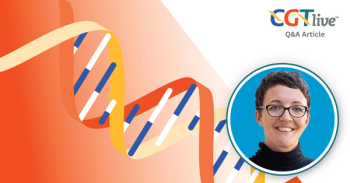
Gene Therapy for Hemophilia B Efficacious, Well-Tolerated
uniQure announced positive results from their phase 3 HOPE-B study of etranacogene dezaparvovec.
Etranacogene dezaparvovec is efficacious in the
Participants treated with etranacogene dezaparvovec exhibited sustained increases in Factor IX (FIX) activity as measured by a one-stage APTT-based clotting assay, with an increase from 39.0% of normal mean FIX activity at 26-weeks of follow-up to 41.5% of normal mean FIX activity at 52 weeks. No significant correlation was seen between pre-existing neutralizing antibodies to adeno-associated virus serotype 5 (AAV5; NAbs) and FIX activity in patients with NAb titers up to 678.2.
“We continue to be very encouraged by the data generated from the HOPE-B pivotal study of etranacogene dezaparvovec, which have been accepted for presentation at the annual International Society on Thrombosis and Haemostasis congress taking place next month,” Ricardo Dolmetch, PhD, president, research and development, uniQure, said in a statement.
The multinational, open-label, single-arm HOPE-B study aimed to evaluate the safety and efficacy of etranacogene dezaparvovec. The study enrolled 54 participants with severe or moderately severe hemophilia B (no more than 2% FIX activity) that required prophylactic FIX replacement therapy. The study began with a 6-month observation period with standard of care to establish baseline values, after which time the participants received a single intravenous dose of etranacogene dezaparvovec 2 x 1013 gc/kg. Patients were not excluded from the trial based on their pre-existing NAbs to AAV5 and 43% had pre-existing NAbs to AAV5 up to a maximum observed pre-dosing titer of over 3200.
READ MORE:
Etranacogene dezaparvovec consists of an AAV5 viral vector delivering a patented Padua variant of FIX (FIX-Padua). A single dose of the treatment was prospectively found to significantly reduce the annualized rate of bleeding requiring treatment by 80%, from 3.39 per year at baseline to 0.68 per year at 52 weeks (P <.0001). The annualized rate of spontaneous bleeding requiring treatment was also significantly reduced by 85% from 1.16 bleeds per year at baseline to 0.18 bleeds per year at 52 weeks (P <.0001).
Investigators found a 96% reduction in use of FIX replacement therapy in all patients during the interventional period. Fifty-two (96%) discontinued the therapy entirely. Of the 2 non-responders, 1 received a partial dose due to an infusion reaction and the second had an unusually high pre-existing NAb titer of 3,212. No treatment-related serious adverse events were observed. No inhibitors to FIX have been reported and no significant association between safety and pre-existing NAb titers has been observed.
“The 52-week data show mean FIX activity in the normal range and increase our confidence in the potential durability and long-term benefits of etranacogene dezaparvovec, bringing us one step closer to our goal of delivering this groundbreaking therapy to fulfill an unmet medical need for patients living with hemophilia B,” Dolmetch added.
The FDA previously granted the gene therapy breakthrough therapy designation and last June, uniQure and CSL Behring announced a commercialization and license agreement granting CSL Behring exclusive global commercialization rights to the treatment.
REFERENCE
uniQure announces positive 52-week clinical data from HOPE-B pivotal trial of etranacogene dezaparvovec gene therapy in patients with hemophilia B and provides regulatory update. News release. UniQure. June 22, 2021. https://www.globenewswire.com/news-release/2021/06/22/2251227/0/en/uniQure-Announces-Positive-52-Week-Clinical-Data-from-HOPE-B-Pivotal-Trial-of-Etranacogene-Dezaparvovec-Gene-Therapy-in-Patients-with-Hemophilia-B-and-Provides-Regulatory-Update.html
Newsletter
Stay at the forefront of cutting-edge science with CGT—your direct line to expert insights, breakthrough data, and real-time coverage of the latest advancements in cell and gene therapy.































